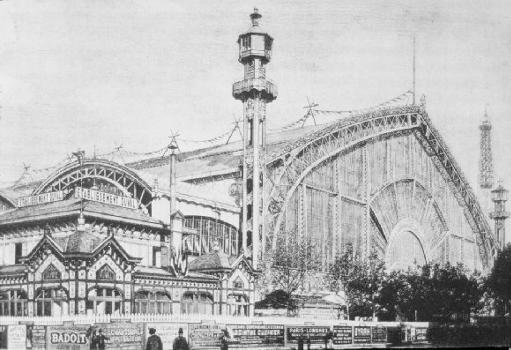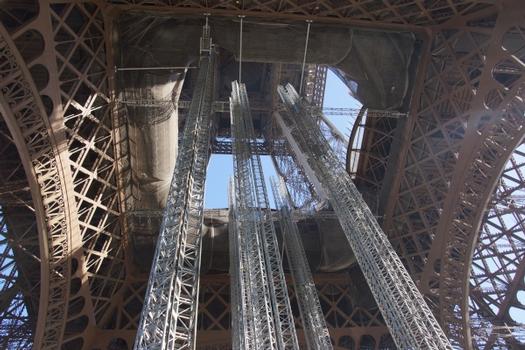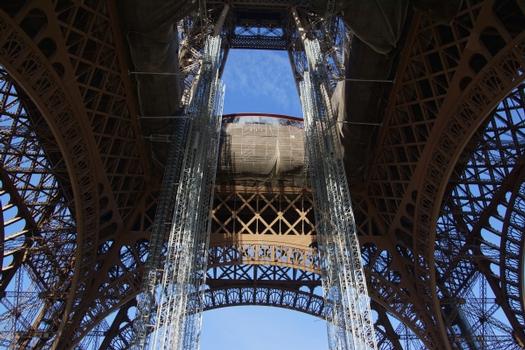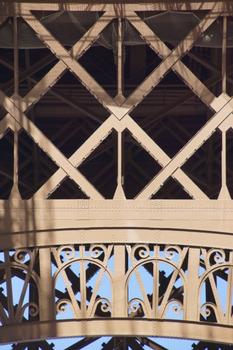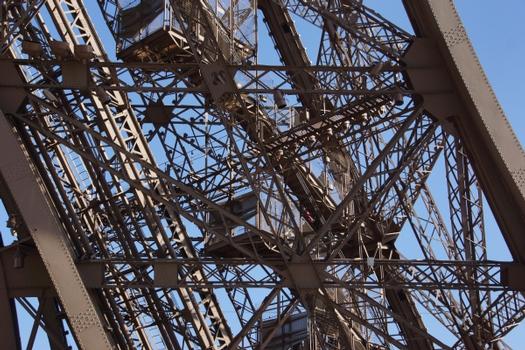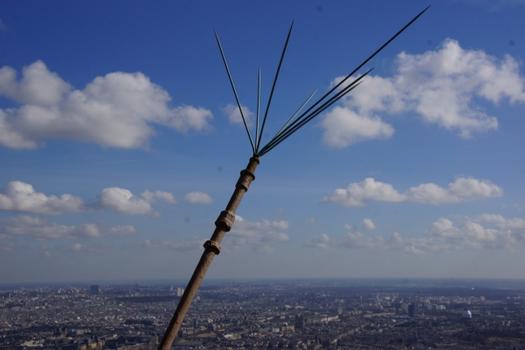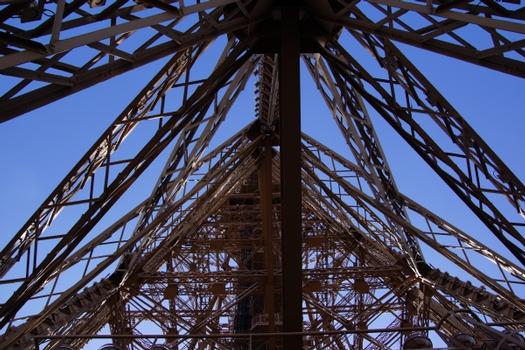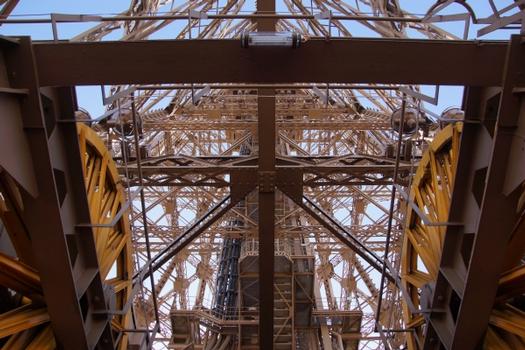General Information
Project Type
| Event type: |
World's fair |
|---|
Location
Technical Information
There currently is no technical data available.
Excerpt from Wikipedia
The Exposition Universelle of 1889 (French: [ɛkspozisjɔ̃ ynivɛʁsɛl]) was a world's fair held in Paris, France, from 6 May to 31 October 1889.
It was held during the year of the 100th anniversary of the storming of the Bastille, an event considered symbolic of the beginning of the French Revolution. The fair included a reconstruction of the Bastille and its surrounding neighborhood, but with the interior courtyard covered with a blue ceiling decorated with fleur-de-lys and used as a ball room and gathering place. The exhibition was "used as showcases for scientific and technological advances, but also often included exhibits of objects from the past, including prehistoric times." (Muller-Scheessel). A close collaborator of the baron Haussmann, Jean-Charles Alphand, head of the Paris Department of Public Promenades and Plantations, is the organizer of the fair.
The 1889 Exposition covered a total area of 0.96 km², including the Champ de Mars, the Trocadéro, the quai d'Orsay, a part of the Seine and the Invalides esplanade. Transport around the Exposition was partly provided by the 3 kilometre (1.9 mi) 600 mm (1 ft 11 5⁄8 in) gauge Decauville railway at Exposition Universelle. It was claimed that the railway carried 6,342,446 visitors in just six months of operation. Some of the locomotives used on this line later saw service on the Chemins de Fer du Calvados and the Diégo Suarez Decauville railway.
Structures
The main symbol of the Fair was the Eiffel Tower, which served as the entrance arch to the Fair. The 1889 fair was held on the Champ de Mars in Paris, which had been the site of the earlier Paris Universal Exhibition of 1867, and would also be the site of the 1900 exposition. Since the lifts had not been completed when the Exposition opened, the first visitors had to walk up to the second floor platform. Workers had worked through the night the day before the exhibition opened to complete the necessary construction needed to safely allow patrons to set foot upon the structure. When speaking of the dedicated workers, M. Salles, the son-in-law of Eiffel made the statement that "no soldier on the battle field deserved better mention than these humble toilers, who, will never go down in history." No one other than construction personnel were allowed higher than the second floor platform.
An equally significant building constructed for the fair was the Galerie des machines, designed by architect Ferdinand Dutert and engineer Victor Contamin. It was reused at the exposition of 1900 and then destroyed in 1910. At 111 meters, the Galerie (or "Machinery Hall") spanned the longest interior space in the world at the time, using a system of hinged arches (like a series of bridge spans placed not end-to-end but parallel) made of steel or iron. Although often described as being constructed of steel, it was actually made of iron.
There is an extensive description, with illustrations, of the Exposition's two famous buildings in the British journalEngineering (3 May 1889 issue). A follow-up report appears a late issue with this summation:
the exhibition will be famous for four distinctive features. In the first place, for ist buildings, especially the Eiffel tower and the Machinery Hall; in the second place, for ist Colonial Exhibition, which for the first time brings vividly to the appreciation of the Frenchmen that they are masters of lands beyond the sea; thirdly, it will be remembered for ist great collection of war material, the most absorbing subject now-a-days, unfortunately, to governments if not to individuals; and fourthly, it will be remembered, and with good cause by many, for the extraordinary manner in which South American countries are represented.
The 28 June issue ofEngineering also mentions a remarkable "Great Model of the Earth" created by Theodore Villard and Charles Cotard. There were unseasonal thunderstorms in Paris during that summer of 1889, causing some distress to the canopies and decoration of the exposition, as reported by the Engineering issues at that time.
The Exhibition included a building by the Paris architect Pierre-Henri Picq. This was an elaborate iron and glass structure decorated with ceramic tiles in a Byzantine-Egyptian-Romanesque style. After the Exposition the building was shipped to Fort de France and reassembled there, the work being completed by 1893. Known as the Schoelcher Library, initially it contained the 10,000 books that Victor Schoelcher had donated to the island. Today, it houses over 250,000 books and an ethnographic museum, and stands as a tribute to the man it is named after who led the movement to abolish slavery in Martinique.
Attractions
A "Negro village" (village nègre) where 400 people were displayed constituted the major attraction.
Matching closely the opening day of the Exposition, the Opéra Comique premiered on 14 May 1889 with a work specially composed for that event: Jules Massenet'sEsclarmonde (debuting American soprano Sybil Sanderson), attracting and entertaining crowds of visitors for the more than 50 evenings the Exposition lasted.
At the Exposition, the French composer Claude Debussy first heard Javanese gamelan music, performed by an ensemble from Java. This influenced some of his later compositions.
William Stroudley, locomotive superintendent of the London, Brighton and South Coast Railway died (of illness) whilst at the exhibition, where he was exhibiting one of his locomotives. Heineken received the Grand Prix (English: Grand Prize) at the exposition.
Buffalo Bill recruited American sharpshooter Annie Oakley to rejoin his "Wild West Show" which performed for packed audiences throughout the Exposition. Other prominent visitors included the Shah of Persia Nasereddin Shah, Prince of Wales (the future Edward VII) and his wife, Princess Alexandra; artists James McNeill Whistler, Edvard Munch, Rosa Bonheur, Paul Gauguin and Vincent van Gogh; U.S. journalist and diplomat Whitelaw Reid; author Henry James; Filipino patriot Jose Rizal; and inventors Nikola Tesla and Thomas Edison.
A central attraction in the French section was the Imperial Diamond, at the time the largest diamond in the world.
The Mexican pavilion featured a model of an exotic (for Europeans) Aztec temple, a "combination of archeology, history, architecture, and technology."
The presentation of Joseph Farcot's steam engine, that had already won a prize in 1878.
Statistics
- Expenses: 41,500,000 Francs
- Receipts: 49,500,000 Francs
- Visitors: 32,250,297
- Exhibitors: over 61,722, of whom 55% were French
- represented countries: 35
Text imported from Wikipedia article "Exposition Universelle (1889)" and modified on July 22, 2019 according to the CC-BY-SA 4.0 International license.
Participants
- Joseph-Antoine Bouvard (architect)
Relevant Web Sites
Relevant Publications
- (1983): Architektur der Weltausstellungen. Kohlhammer, Leipzig (Germany), pp. 226.
- (1889): Congrès international des électriciens à l'exposition universelle de Paris 1889. In: Schweizerische Bauzeitung (1883-1946), v. 14, n. 10 (7 September 1889).
- (1989): Eiffel. Editions Adam Biro, Paris (France).
- (2005): L'Exposition universelle de 1889. Grandeur et décadence de l'architecture du fer. In: (2005): Les expositions universelles à Paris de 1855 à 1937. Action Artistique de la Ville de Paris, Paris (France), pp. 112-118.
- (2005): L'Exposition universelle de 1889. La rue du Caire. In: (2005): Les expositions universelles à Paris de 1855 à 1937. Action Artistique de la Ville de Paris, Paris (France), pp. 131-134.
- About this
data sheet - Structure-ID
10000016 - Published on:
30/05/2000 - Last updated on:
27/05/2021

